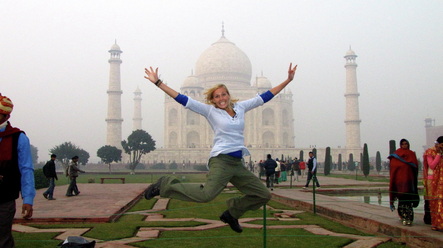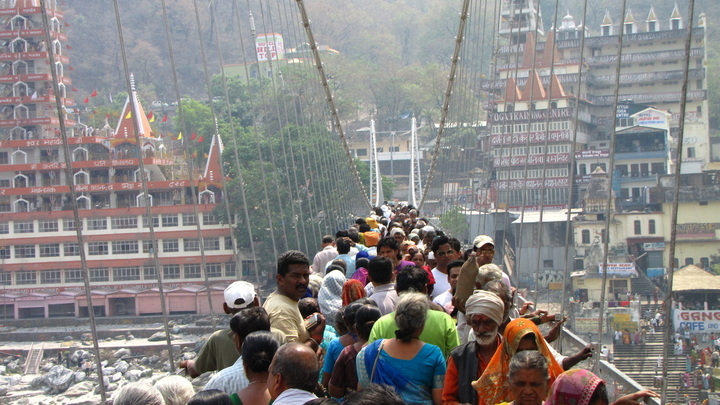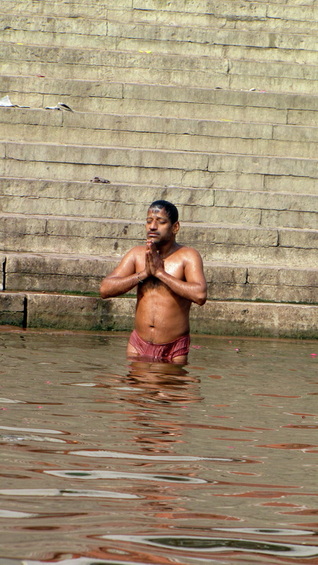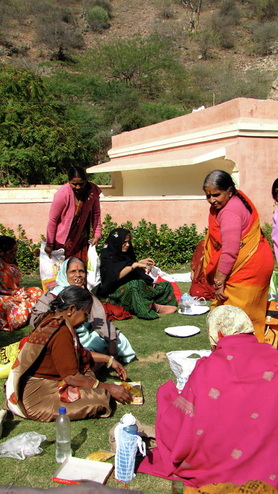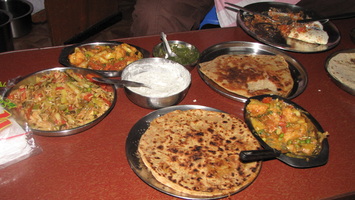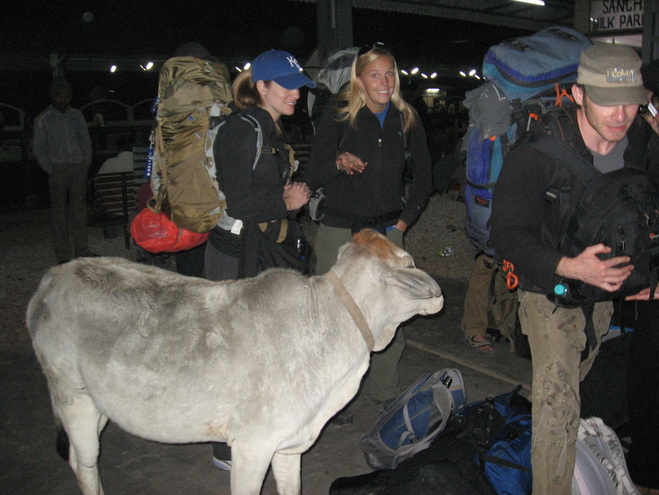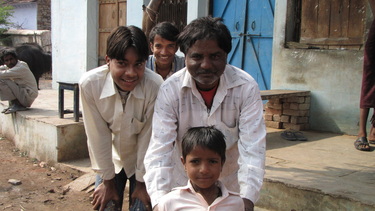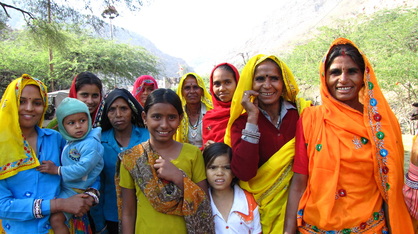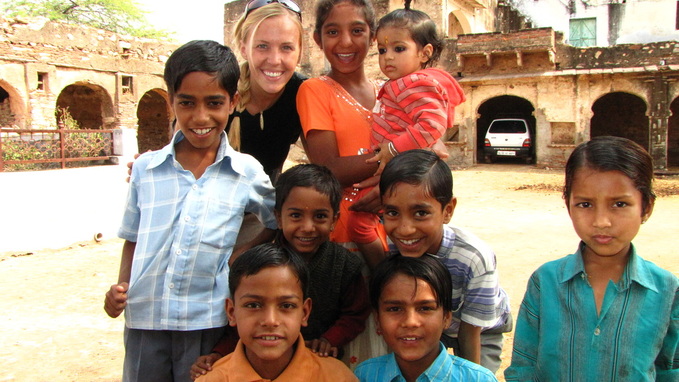The Incredible India
Inflicting the same damage as writer’s block, India has slapped me with the opposite, writer’s overload. What to write about, replaced with what not to write about as even the simplest experiences lend themselves to a myriad of impressions, thoughts and perceptions crucial to the literary re-telling of the experience, but which seem to change just as quickly as I can write them down. You see, to paint an accurate picture of India, is like initiating an argument you cannot win. Each time you think you have an idea or event nailed down, another issue arrises which makes you reconsider your stance on the previous. A problem that, for the past 2 months, has all but debilitated by ability to transform one solitary experience into an accurately portrayed composition.
|
Thankfully, as each day matures into the next, so does my understanding of this great nation. I have learned that first impressions are almost always inaccurate, nothing more then surface accusations focused on India’s anomalous characteristics, rather then it’s laudable attributes, and to grasp the true India, I would need time and patience. Time for each event, activity and person encountered to marinate my cognitive ergo growing into deeper perceptions and objective impressions. Impressions that I intend to share with you now.
|
Consider it a brief and extremely fragmented introduction to India’s endless dichotomies, constructed by its idiosyncrasies, which give birth to its realities. Or, more simplify put, a listing of the bad, the good, and the just plain bizarre attributes that make India so incredible!
.

Let’s start with the “bad” aspects many consider synonymous with India. The inexorable cultural and lifestyle contrasts that will almost certainly, astonish and quite possibly, disturb new arrivals.
First, and foremost, Trash. Undoubtedly the first and last thing you will see in India.
Unrestricted trash disposal (what environmentalists would term, “littering”) is apart of India’s culture, just as much as not littering is to many others cultures. Generally speaking, following consumption of any product (simply name one), the unusable detritus are discarded on whatever surface nearest, with little, or no regard to the appearance, smell, or problem they are abetting in. Sure, the biodegradable materials such as paper and scraps of unwanted food, are only aesthetic flaws to the landscape, but what about environmental hazards, like plastic? Cows try to ingest it, street sweepers try to burn it, and impoverished people try to re-sell it, but plastic remains India’s most tangible nemesis.
India’s next unfortunate reality, Poverty.
Over 75% of India’s whopping population falls under the poverty line, a line resembling more of a wall, then a permeable transition from one life to the next. Pauperdom is a black hole, detaining even the most resilient and propitious of individuals from amounting to anything more. Expectedly, lack of funds obstruct many outlets towards economic betterment, such as education and entrepreneurship, but family caste also plays a large hand. The few that break free from their indigent beginnings, rarely escape that of societies stereotypes on them. “From the slums, lower caste, beggar for life”, are associations that can follow people their entire lives, no matter what their achievements and successes. And although the caste system is meeting more resistance as cities liberalize, it doesn’t seem to be happening fast enough. Slums continue to grow exponentially by the month, diseases continue to ravage those who can’t afford health care, and job opportunities dwindle every day.
First, and foremost, Trash. Undoubtedly the first and last thing you will see in India.
Unrestricted trash disposal (what environmentalists would term, “littering”) is apart of India’s culture, just as much as not littering is to many others cultures. Generally speaking, following consumption of any product (simply name one), the unusable detritus are discarded on whatever surface nearest, with little, or no regard to the appearance, smell, or problem they are abetting in. Sure, the biodegradable materials such as paper and scraps of unwanted food, are only aesthetic flaws to the landscape, but what about environmental hazards, like plastic? Cows try to ingest it, street sweepers try to burn it, and impoverished people try to re-sell it, but plastic remains India’s most tangible nemesis.
India’s next unfortunate reality, Poverty.
Over 75% of India’s whopping population falls under the poverty line, a line resembling more of a wall, then a permeable transition from one life to the next. Pauperdom is a black hole, detaining even the most resilient and propitious of individuals from amounting to anything more. Expectedly, lack of funds obstruct many outlets towards economic betterment, such as education and entrepreneurship, but family caste also plays a large hand. The few that break free from their indigent beginnings, rarely escape that of societies stereotypes on them. “From the slums, lower caste, beggar for life”, are associations that can follow people their entire lives, no matter what their achievements and successes. And although the caste system is meeting more resistance as cities liberalize, it doesn’t seem to be happening fast enough. Slums continue to grow exponentially by the month, diseases continue to ravage those who can’t afford health care, and job opportunities dwindle every day.
Finally, Population rounds out, and plumps out, India’s last ineluctable ingredient.
You are never alone in India, there will always be someone near, and yet another person, nearer. Forecasted to pass China’s immense population in the next few years, India’s population is erupting. Akin to most developing nations, cities feel the brunt of populace expansion, but it’s the rural area’s who are, quite literally, giving birth to the problem. Contraceptives are rarely used and “family planning” does not exist. Once you’re married, you’re ready for children.
You are never alone in India, there will always be someone near, and yet another person, nearer. Forecasted to pass China’s immense population in the next few years, India’s population is erupting. Akin to most developing nations, cities feel the brunt of populace expansion, but it’s the rural area’s who are, quite literally, giving birth to the problem. Contraceptives are rarely used and “family planning” does not exist. Once you’re married, you’re ready for children.
There is no end in sight for this population proliferation and sadly, majority of India’s population will be claimed by poverty. But don’t be fooled, for every impoverished hand extended for charity, there is another clutching a wallet full of money. A world of high-caste’s, servants, personal drivers and incredible luxuries also exist. The all-hour night clubs of Mumbai, the luxury car saturated streets of New Delhi and the high-dollar real estate around Goa’s alluring beaches. This is India too. A swelling middle-class pushing towards affluence everyday, while the already affluent continue to grow richer. A dichotomy which exists in most countries - the rich get richer, the poor get poorer - but probably none so apparent as India.
Ok, so we’ve recognized and introduced a handful of India’s unfavorable attributes but it’s time to examine the other side of the coin. Those wondrous qualities that will inspire and perhaps reshape your outlook on life.
Ok, so we’ve recognized and introduced a handful of India’s unfavorable attributes but it’s time to examine the other side of the coin. Those wondrous qualities that will inspire and perhaps reshape your outlook on life.
|
Religion.
You will discover a life infused with religion. Whether Hindu, Buddhist, Muslim, Jain or Christian, Indians admirably acknowledge their corresponding, “God” (or “Gods”), in all they do. No, task is too menial, no distance is too far, no activity is too ignominious. Believers will trek across the country, with nothing more then the clothes on their backs and a few rupees in their pocket, to partake in religious festivals. Believers will halt business, or delay opening, to ensure completion of diurnal prayers. Believers will even perform tasks, disbelievers deem repugnant. One of such classification, the ritual, and for many, habitual, anointments, baths, and drinks taken from squalid pools and rivers considered sacred. Looking past the disconcerting additions of trash, excrement, and human remains, believers only see the purity of the water, soaking up its medicinal powers and karma-tic benefits. Community. You will feel the warmth of community, even as an outsider. Friendly handshakes are extended to ensure comfort and happiness, queries are answered before even asked, and conversations initiated for no other reason then to say, “Hello”, and, “Welcome”. No matter the reason, people want to meet you and more so, to call you their friend. Reciprocating their kind gestures with a friendly willingness, not to mention accepting innumerable cups of chai tea along the way, advances you from stranger to friend status in a significant instant. |
|
And Food.
Color may paint life in India, but food spices it. Born from age old, finely tuned spice combinations, India’s lip-smacking, taste bud titillating delicacies range from piquant savories to sultry sweets. Dancing to life on your palate, some flavors will sweep you into a delicious waltz, while others leap into an intensely flavorful tango. Whatever your taste preference, I promise India has a dish for you...but only if you’re willing to try. |
Happiness.
You will uncover happiness in the least likely of places. Families laughing and blathering away over their daily task of molding cow manure into disks for desiccation, women joyfully gossiping about the days happenings while arduous load of sticks and rock, balanced perfectly atop their heads, strain their well-conditioned muscles, children playing impassioned games of cricket atop trash mounds, and the most untarnished smiles, beaming forth from beneath layers of filth. Of course, you will also see happiness amongst the wealthy but for me, it’s the happiness that comes from the lack of money, that is so striking. Color. Color paints life in India. Based in natural elements, such as saffron yellow, chili red, and indigo blue, color is not just classification in India, color paints significance. Exquisitely designed sari’s, sporting lustrous beadwork and vibrant patterns, correspond with festivals and ceremonies. Neon turbans emphatically opposing the overall muted, white garb of their possessors indicate social standing. And the effervescent blue home’s of India’s poorer communities, herald pride and optimism. You will see color, true color, for the first time in your life here in India. |
Finally, India’s good and bad, the Indian Yin and Yang, would not be complete without the line connecting the two. A grey area that can only be classified as those different, and quite possibly bizarre, characteristics that hold everything together.
Cows. “Holy” Cow’s to be exact. Worshiped, and therefore protected, by the Hindu religion, cows are commonplace citizens in India, with practically more pedestrian rights then people. Especially, in the cities. If a cow decides to take a nap, for instance, in the middle of a highway, you go around. If a family of cattle choose to embark on a sluggish Sunday stroll down main street, cars must await passage. And when herds make camp on railway tracks, train conductors must coerce them from the tracks without inflicting physical harm. With no fear of punishment, subsequent restraint, or ending up on a dinner plate, it’s no wonder cows have become desensitized to their unconventional surrounds and even adapted to it. Light poles provide great scratching posts, fast-moving traffic emit refreshing breezes and a never ending smorgasbord of trash lines every alleyway. Whether green pastures or urban boulevards, cows always have the right of way in India.
Cows. “Holy” Cow’s to be exact. Worshiped, and therefore protected, by the Hindu religion, cows are commonplace citizens in India, with practically more pedestrian rights then people. Especially, in the cities. If a cow decides to take a nap, for instance, in the middle of a highway, you go around. If a family of cattle choose to embark on a sluggish Sunday stroll down main street, cars must await passage. And when herds make camp on railway tracks, train conductors must coerce them from the tracks without inflicting physical harm. With no fear of punishment, subsequent restraint, or ending up on a dinner plate, it’s no wonder cows have become desensitized to their unconventional surrounds and even adapted to it. Light poles provide great scratching posts, fast-moving traffic emit refreshing breezes and a never ending smorgasbord of trash lines every alleyway. Whether green pastures or urban boulevards, cows always have the right of way in India.
Public Restrooms (or lack thereof). You will see more people then you care to remember relieving themselves along railroad tracks, against public buildings, and on the cement blocks literally right next to you. Some, “respectfully” turning their backs to you, others providing full-frontals not soon forgotten.
.
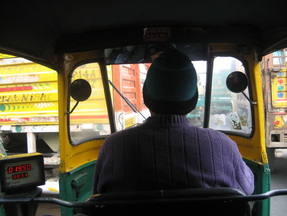
Honking! Used as a last resort warning in many countries, honking in India is the exact opposite. Blinkers aren’t used, passing laws aren’t followed (if there were any to follow) and lanes are dictated by the obstacles in the road (stubborn cows, runaway produce carts, stalled vehicles, sluggish pedestrians, ect.) which leaves only one reliable authority on the road, your HORN! A necessary evil, honking warns other vehicles of your presence and your intentions. I hate to say it, but the more honking the better, and those yahoo’s who take honking to an unnecessary extreme, convinced their horn is a supersonic laser beam by which initiating an irritating, unremitting honk will instantly destroy the cars in their path, are probably the safest drivers in India.
|
Staring. Ever want to know how a celebrity feels? Come to India. As a foreigner, you will be stared at anywhere and everywhere you go. And I’m not referring to indiscrete glances, these are stop in your tracks, mouth open, non-blinking gawks. But don’t be alarmed, most people don’t even realize they’re doing it. More curious then anything, all that is required to end their ocular interrogation, is a smile. A smile that will almost certainly be returned, ending the awkward, “model on display” feeling. Now for females, the “piece of meat” sensation is more difficult to denounce, but a good long stare back, followed by an unappreciative scowl, is usually enough to make the men reconsider their degrading appraisal.
|
The Indian Head Wobble. Similar to the Western “Head Bob”, in which people greet, thank, or show appreciation with a slow up and down bob of their head, the Indian Wobble flips the movement from vertical to lateral, adds a slight wiggle and is mysteriously able to transmit every emotion known to man. Signifying anything from a simple, “Hello” or “Goodbye” to “Yes” and “No”, the Wobble can also be used to entice purchases by shop owners, show interest between the sexes, and even contradict words being spoken (forever confusing tourists like myself). For instance, stating “No” but still moving their head in a happy side to side wiggle, otherwise interpreted as an affirmative gesture. A most curious yet addicting gesture that you will almost certainly adopt at one time or another. |
So, there you have it. Two months of notes outpoured in a brief (well, as brief as I can be) synopsis of my current, although ever-changing, impressions of India. Have I left anything out? Heaps! Is there more I wish I could add? Absolutely. But, as I’ve learned, words will never be able to quantify India. The ability to embrace mystifying moments for the insights and revelations unveiled, to recognize bizarre incidents as routine necessities, and to look past often tragic events to find humanity and beneficence can only be revealed through personal experience. This is my India, I urge you to go find yours.©
